An email blast is a single message delivered to a large recipient list. As the name implies, it’s a marketing tactic with broad reach, but limited depth.
As far as email marketing strategies go, blasts have the highest likelihood of reaching your customers. Email blasts that follow CAN-SPAM Act guidelines will land in the inboxes of everyone on your list. However, blasts lack the finesse of personalized communications.
Messages that have broad appeal are well-suited for blasts. B2B and B2C marketers often use blasts to:
- Introduce new product or service features.
- Announce upcoming events.
- Distribute content.
- Conduct surveys.
- Advertise special promotions.
In recent years, email blasts have grown more nuanced and thus more useful to content marketers. Email automation solutions have made it easier to quickly develop segmented campaigns that appeal to distinct verticals. The ability to slice audience segments based on common interests and characteristics makes it possible to distribute engaging content and therefore improve click-through rates. In fact, 93% of B2B marketers use email to distribute content.
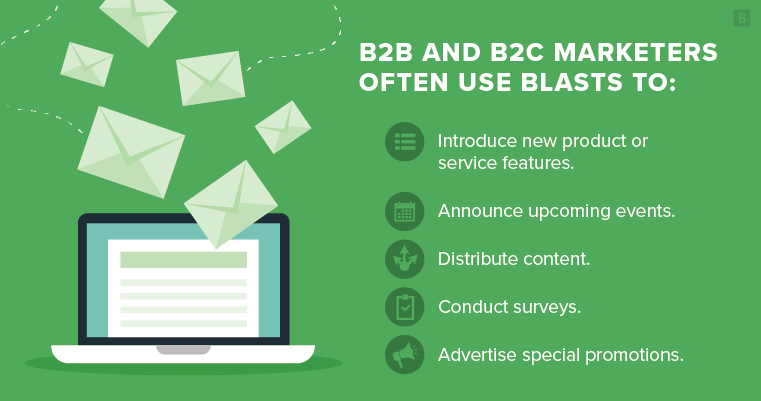
If your organization’s marketing strategy includes newsletters, you’re already using email blasts. Now let’s look at how to give them some life.
How to write an email blast
When it comes to email marketing in 2019, hyper-personalization is the name of the game. Personalization leads to higher open rates and more opportunities for your readers to click on your calls-to-action.
So how do you write an email blast that takes advantage of users’ preferences for tailored messages?
Research and segment your audience
Some messages can go out to your entire email list, but if you send every message to your whole list, you’re going to end up with a lot of annoyed customers.
Create separate email lists based on unique types of contacts to deliver a more personalized experience. Use demographic and psychographic data to delineate target audiences within your customer base. Enterprise-grade email marketing solutions can automatically segment contacts based on data pulled from your customer relationship management (CRM) tools.
Use email marketing best practices
Many of today’s email marketing strategies evolved from the world of direct mail. OG Mad Men like John Caples and David Ogilvy crafted attention-grabbing headlines using the same tactics we leverage today. In his book on advertising strategies, Caples wrote that headlines and appeals are one and the same; successful ads express the appeal in their headline.
The same advice is true for email subject lines.
Keep them short (between 40 and 60 characters), use language the reader will understand at a glance, and get to the point. Your body copy should also be succinct, and you should display it in a visually appealing template. Some best practices may vary depending on the type of email message.
Test your copy
Any time you’re using a new marketing appeal, you should test it to see how different audience segments respond. A/B testing – where you send two versions of your copy to similar lists – is an effective way to see what messaging best engages your customers.
Don’t skip this essential step. As the legendary Ogilvy once said, “Never stop testing, and your advertising will never stop improving.”
How to send an email blast
You can send an email blast with just about any free or paid email service provider; however, you should consider using enterprise-grade platforms if you want to be able to track your campaigns. (Hint: You definitely want to track them.)
Tools to send email blasts
Email blast software like Pardot, Marketo and ActiveCampaign are great options for large organizations with vast numbers of contacts. We’ve reviewed these and other platforms to help you decide which is best suited to your needs.
Smaller businesses and solopreneurs may not need such robust platforms, however. Constant Contact, Drip and SendinBlue are examples of great solutions that are both affordable and beginner-friendly.
Not only will these platforms help you efficiently distribute your messages, they will also ensure your emails display properly on mobile. In 2018, 46% of emails were opened on a mobile device.
Best times to send a blast
As you plan your email campaign, think about when your contacts are most likely to check their email. If you send your blast at the wrong time, it could get buried beneath a pile of similar emails.
According to an Experian report, Mondays have the highest transaction rates and revenue per email. Research also indicates that emails perform better on Sundays than on Saturdays, so you’re better off holding on to your marketing messages until the beginning of the work week. Additionally, Experian found higher open rates between 12:00 a.m. and 4:00 a.m. as well as between 8:00 p.m. and 12:00 a.m. These findings indicate that people are more likely to check their emails late at night or before lunch.
How to measure email blast performance
Before you click the send button on your next email blast, take a snapshot of your current benchmarks and metrics.
For example, if your blast is a sales promotion that links to a product page on your site, measure how many visitors that page gets on average. After you launch the blast, you can monitor your site analytics to measure the impact your email had on traffic going to that page.
Specific metrics you should monitor include:
- Open rate: The number of emails opened divided by the number of emails sent, minus bounced emails.
- Click-through rate: The number of clicks divided by the number of delivered emails.
- Conversion rate: The number of conversions divided by the number of sent emails.
Keep these measurements in mind when you conduct A/B testing. The more data you can collect and track, the more opportunities you’ll have to identify winning campaign messages.
If you’re using newsletters to extend the reach of the content that lives on your website, like blog posts, you’ll need to track page metrics, too. While your SEO strategy will drive organic traffic to your content, newsletter campaigns can ensure your active customers find out about your recent publications, too.
Approximately 40% of B2B marketers believe email newsletters are critical to the success of their content marketing strategy. You already know the contacts on your email lists are interested in your offerings, so give them the opportunity to engage with your brand again and again.
How to avoid the spam folder
When you’re sending mass emails, there’s always a risk that your messages will get caught in your recipients’ spam filters, where they will sit in the dark until they are automatically deleted. As bad as that sounds, the worst risks associated with spam emails are financial penalties from the Federal Trade Commision. Each email in violation of the CAN-SPAM Act carries a fine of up to $42,530.
To comply with federal regulations, any commercial message you send should adhere to these guidelines:
- Header and routing information must accurately identify the person or business who initiated the message.
- Subject lines should reflect the content of the message.
- Senders must disclose that the message is an advertisement.
- Each message should include the sender’s physical address or private mail box.
- Messages should contain clear instructions on how to opt out of receiving future emails.
- Opt-out requests, such as unsubscribe actions, should be honored promptly – within 10 business days.
- If a third party handles your email marketing, both that company and your organization carry the legal responsibility for complying with the law.
Telling your readers how to unsubscribe from your email list may feel like an annoyance, but you can turn it into an opportunity. Track your unsubscribe rates to identify which messages are most objectionable to your contacts. If the number of opt-out requests spikes after an email blast, it’s the clearest indicator you’ll get that something isn’t quite right.
There are two primary ways for readers to subscribe to your mailing lists: single opt-in and double opt-in. With the first method, your site visitors simply give you their email address and that’s it – they’ll start receiving your email messages. With the double opt-in method, users will receive a confirmation email containing a confirmation link. This method lets you know the addresses on your contact list are active (READ: real), and gives you the opportunity to capture user IP addresses, which can support your audience segmentation efforts.
B2B and B2C use cases and examples
The global number of active email accounts is expected to exceed 5.6 billion by 2020.
In other words, if you have customers, they have at least one email address, if not multiple.
No matter what size your business, email blasts are an effective customer engagement tool. In fact, 80% of small businesses use email to drive customer acquisition and retention.
Get inspired by these email blast examples:
Product introductions
Promotional emails like this example from clothing brand Uniqlo are very similar to direct mailers you might receive at your physical address. They should include eye-catching imagery and highlight unique features that encourage readers to learn more.
Roughly 68% of millennials say that promotional emails impact their purchase decisions.
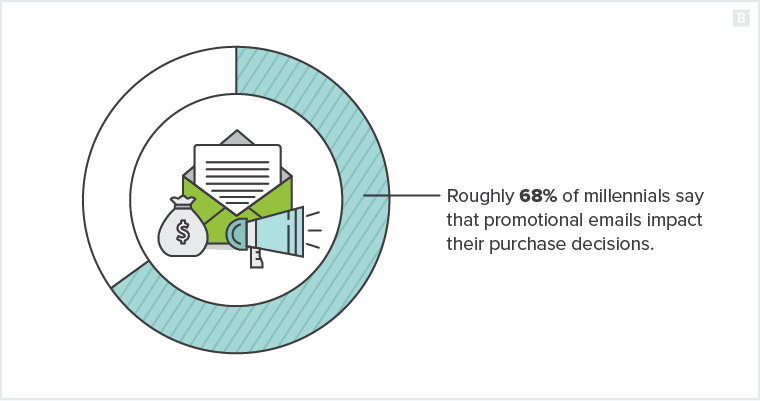
Notice the simple CTA buttons that give recipients the ability to jump straight from their inbox to an e-commerce page. Direct mail can’t do that! Clickable CTAs not only encourage brand engagement, but also offer an easy way to track your email conversion rates. This type of email blast lends itself well to referral programs that encourage readers to share content in exchange for discounts.
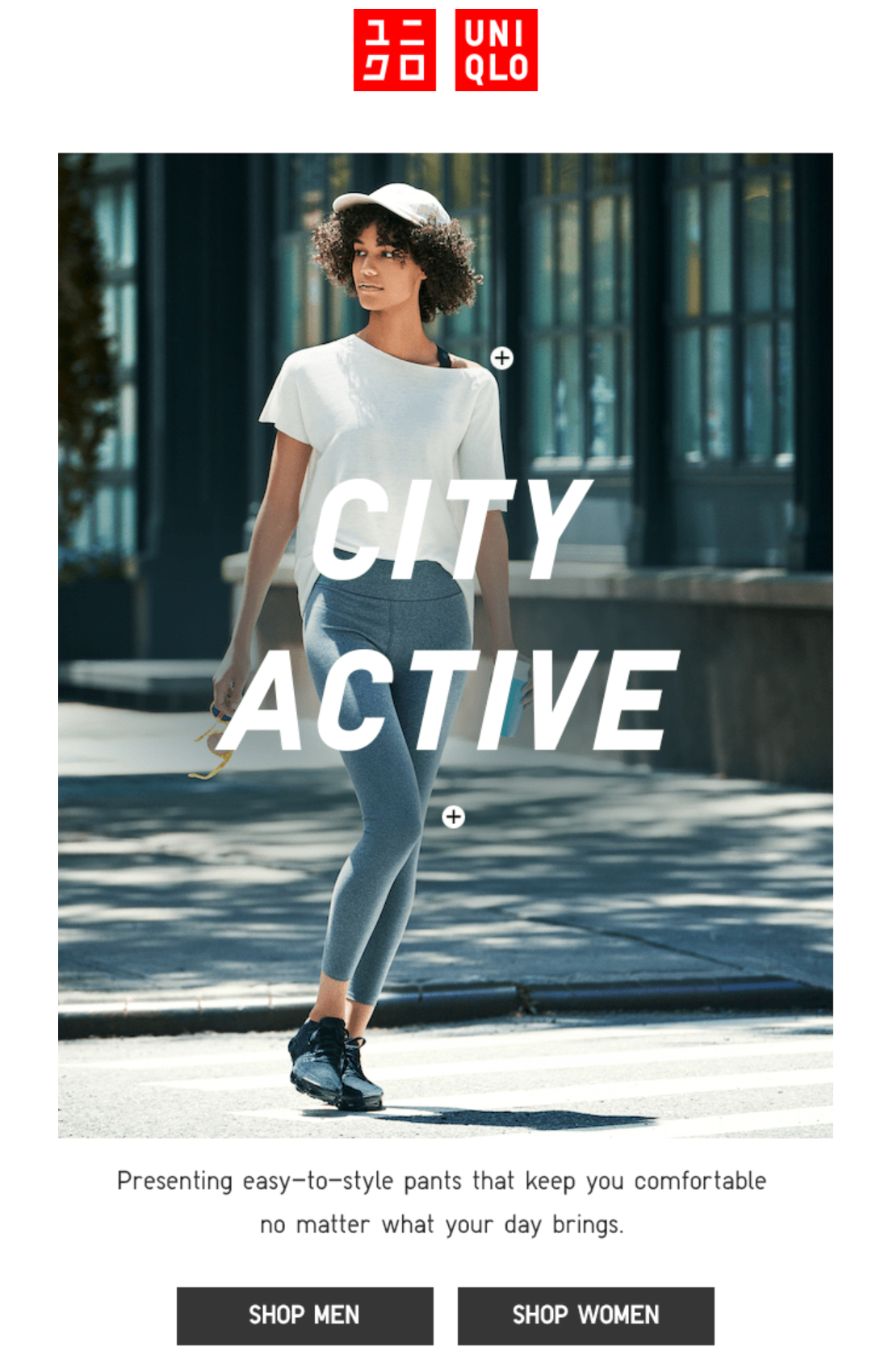
Event announcements
Mass email can be an effective way to promote upcoming events.
The Digital Summit email below is a great example of segmenting an email blast. The brand owners organize events in major cities across the country. This email was clearly distributed to subscribers in the New England region.
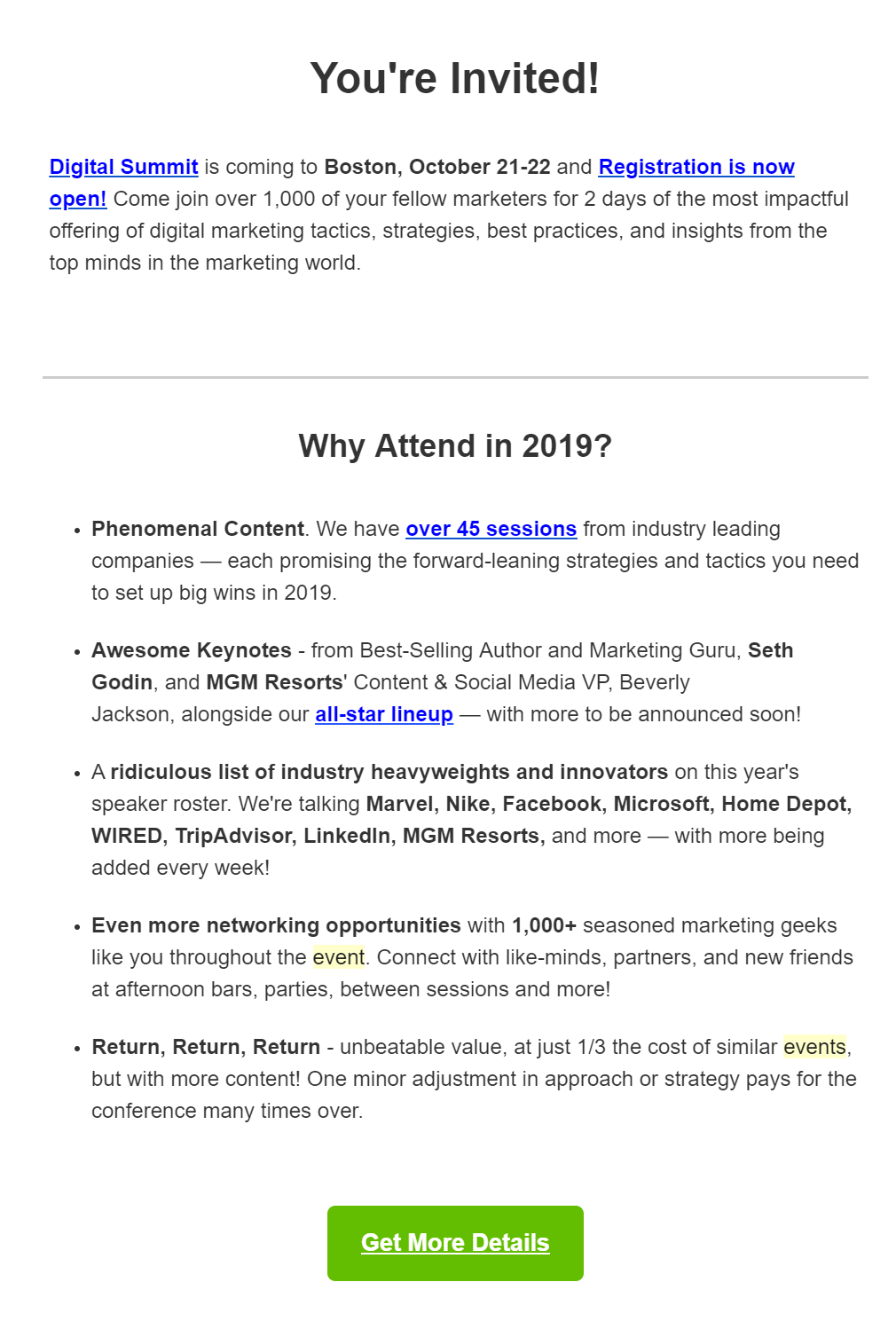
Content distribution
Email campaigns can support your content marketing strategy by extending the reach of your messages.
This example from the SuperDataScience Team announces a new piece of free content in which subscribers are likely to be interested. Once again, you can see the CTA at the bottom of the message encouraging readers to learn more.
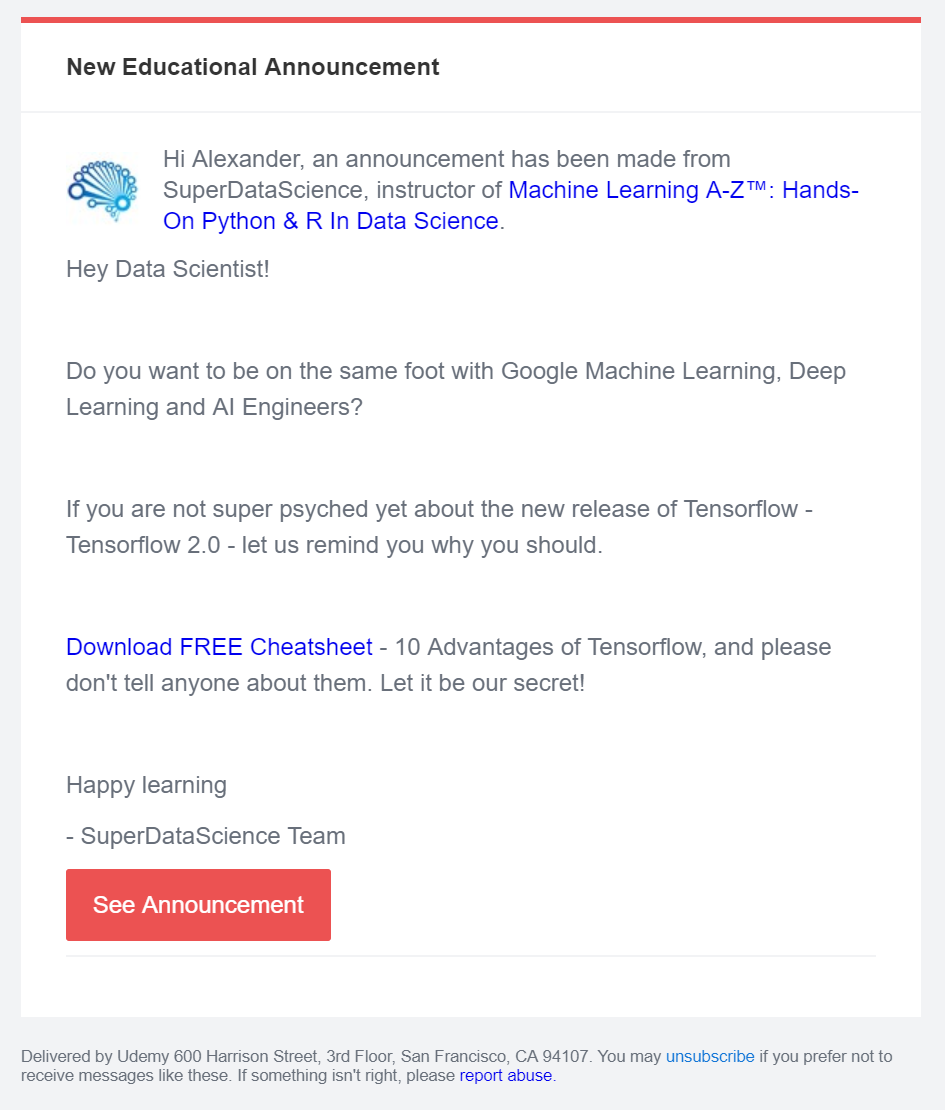
Survey invitations
Surveys are a fantastic tool for learning more about your customers, gathering data on industry trends and understanding how you can improve your services. The copy in a survey invitation should explain why your brand values the reader’s opinions and insight.
As you’ll see in this example from CIO, a monetary incentive can boost your response rates.
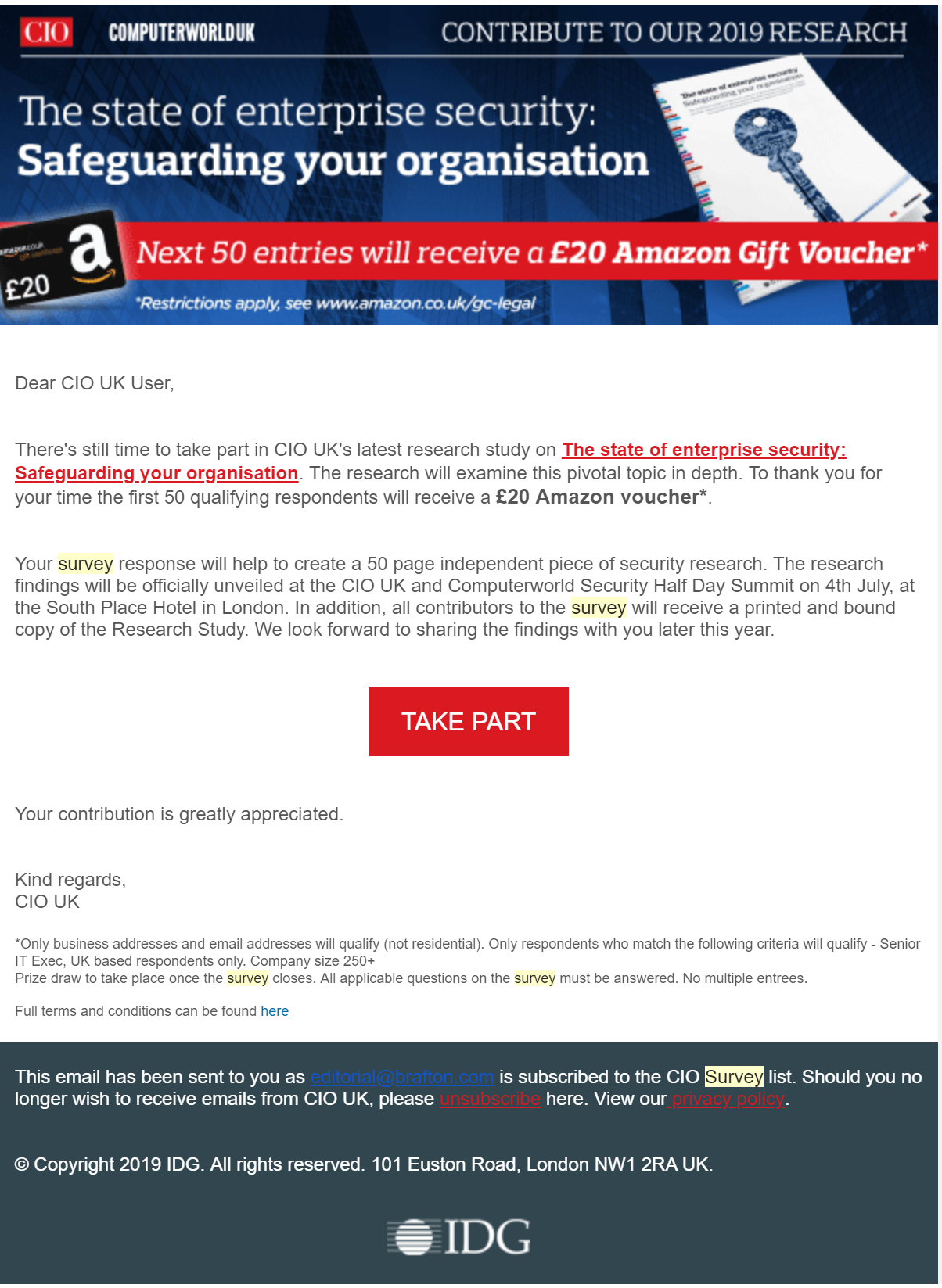
Special promotions
Companies that rely on revenue from subscriptions don’t need to contact their customers quite as frequently because they’re already receiving revenue from them. However, those companies also don’t want their customers to forget about them.
This surprise email from NordVPN is a great example of keeping a brand fresh in the minds of subscribers without annoying them.
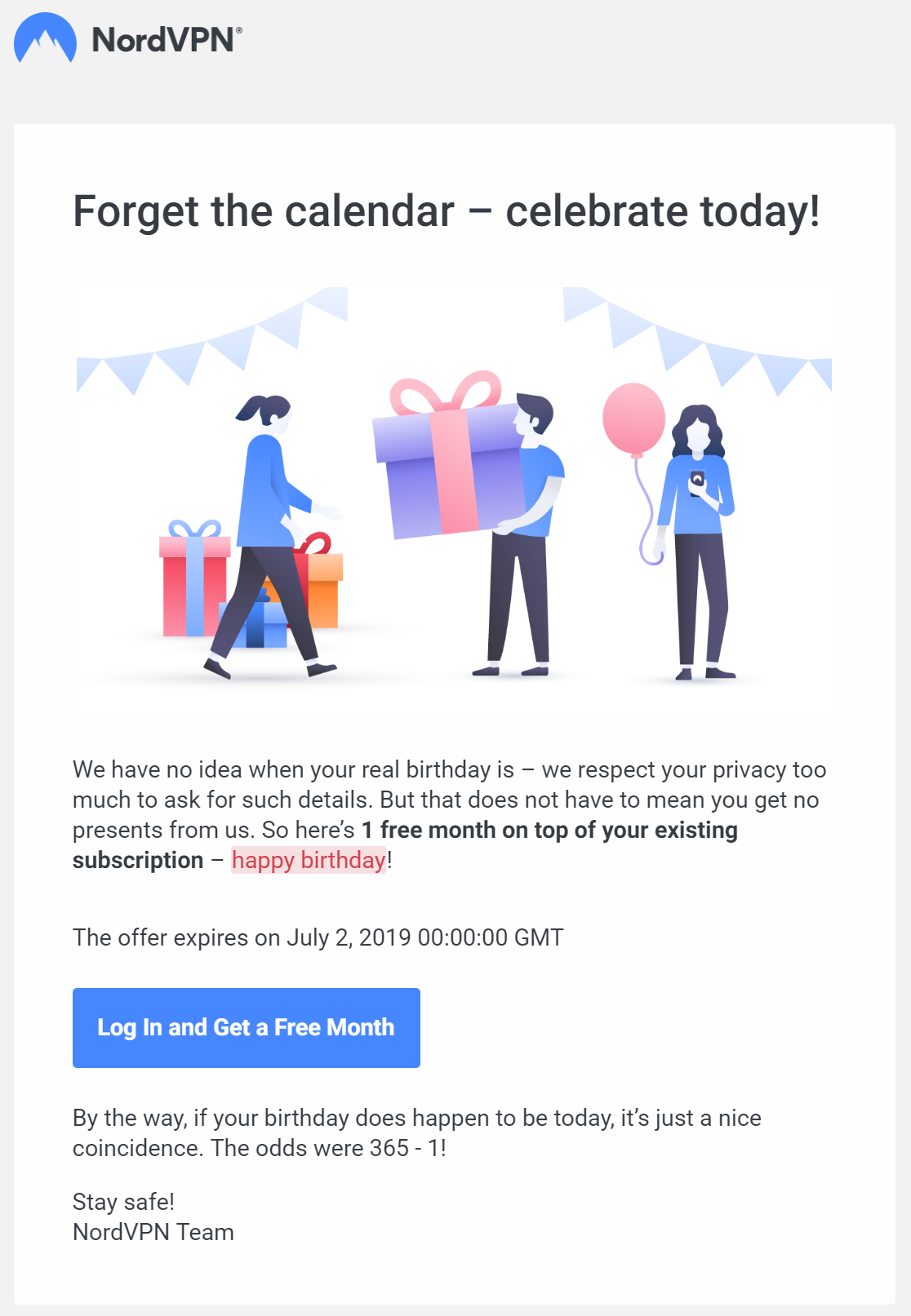
Email blasts can (and should) be fun!
When you send out an email blast, your message should warrant such an extreme outreach effort. It should make readers stop scrolling through their packed inbox and actually want to read more.
Write exciting subject lines, make your email bodies vibrant and easy to read, follow email marketing best practices and always measure your results. Oh, and have some fun, too!





